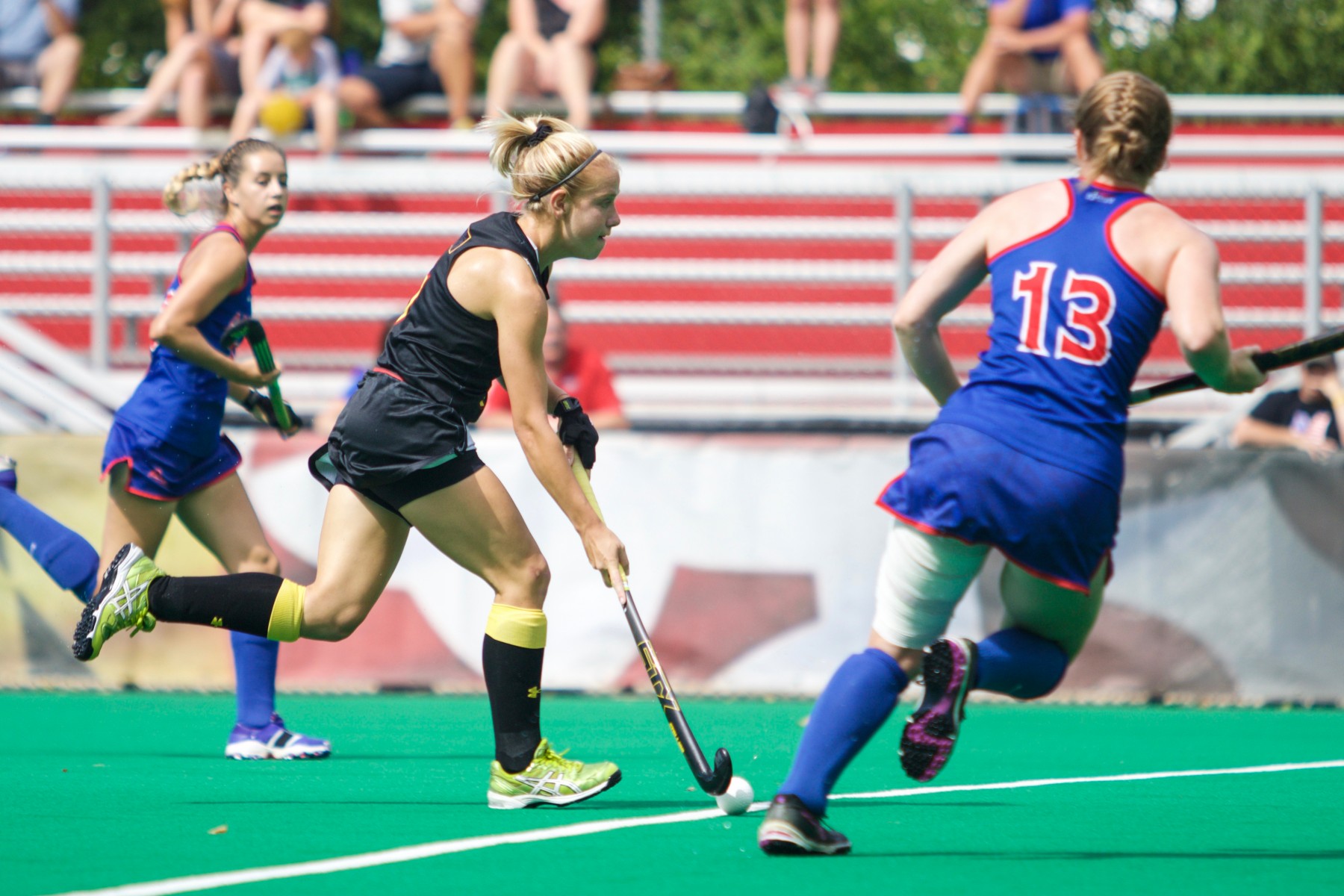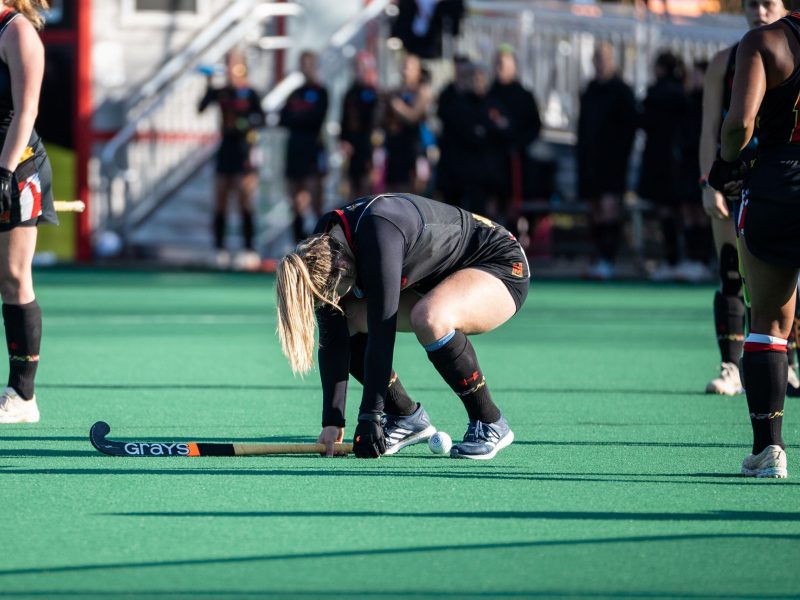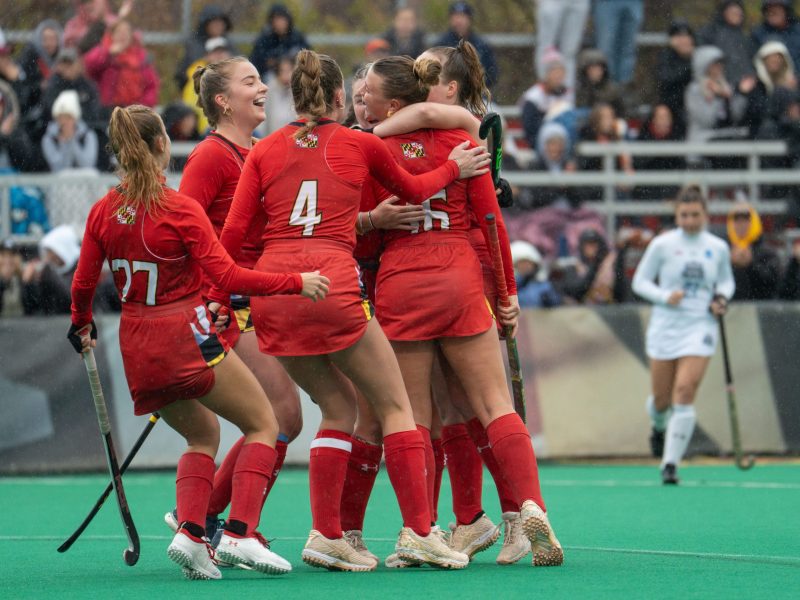In Maryland field hockey coach Missy Meharg’s 29 years with the program, she’s had to adjust her coaching techniques to keep pace with the sport’s advancements.
Since the 2012 Olympics in London, Meharg said the game has emphasized running and fitness.
One way the coach has helped her team transition to the style is by having players wear GPS devices called Player Monitoring Systems. The sports performance brand VX Sport makes the technology to report the player’s heart rate, their distance traveled and the amount of time spent accelerating and decelerating.
The Terps used them in a limited fashion last year but have made the system a priority this season as Meharg aims for her team to play fast.
“You can go with a robust power base or you can be a runner,” she said. “We’ve gone that running route.”
Meharg said rule changes, such as the addition of unlimited substitutions and the elimination of offside penalties, have changed the dynamic of the sport.
In previous seasons, the Terps– would often rotate between their top 12 players during important matchups. Now, the team feels comfortable cycling through at least 15 or 16 players a contest.
That tweak came from wanting to keep up with the rising tempo of the game.
“If other teams start to develop a running game and they’re substituting lots of players, [and] if you have the same people on the field, they’re not going to be as fresh,” Meharg said. “So you have to develop runners.”
The changes make the game more exciting for fans, Meharg said, and also for players and coaches. The increased playing time for reserves helps keep the bench involved and prepares young players for bigger roles in the future.
The added physicality of the sport adds a burden, too. Players are expected to perform at a higher, faster level, and coaches have to learn how hard they can push.
That’s why the GPS devices, which the Maryland men’s soccer team has also used, have been beneficial tools.
“I feel like last year, we just wore them, and then they didn’t really look at the data,” forward Emma Rissinger said. “We actually do stuff with it this year.”
In 2015, the team used the device only in training sessions. This year, in addition to practices and training, the Terps wear it during games. The staff uses the data to help determine factors ranging from on-field substitutions to post-game debriefs.
“[Strength coach Mike Szemborski] watches the heart rates during the game, so if they see that it’s really high, they’ll pull you out,” Rissinger said.
The information also dictates planning and review in practices.
“If it’s a day where they’re all kind of blowing out on you,” Meharg said, “then you’re not going to practice really long.”
The coaches want to ensure they are pushing their players without hurting them, and the device helps them find the balance. The data can also show if a player wasn’t giving full effort.
“Sometimes they [see data] and go ‘Oh, I guess I could run harder,'” Meharg said. “It really gets to your character.”
On game days, the data help the team make decisions to keep the players as rested as possible. In a time when, from Meharg’s perspective, fitness is more important than it’s ever been, the technology has become a crucial part of the team’s success.
“It’s interesting to actually quantify how we feel on the field,” defender Delaney Leathers said. “It’s good to get the most out of everyone on the field … Now you’re able to perform at your max rate for however long you’re in.”



